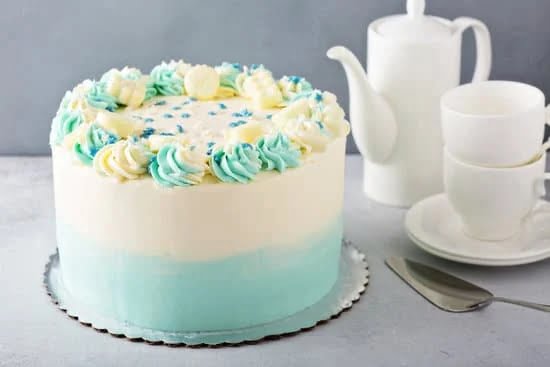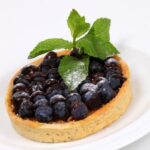Decorating a cake with flowers has become increasingly popular in recent years, adding a touch of elegance and natural beauty to any celebration. Flowers have long been symbolic of love, joy, and celebration, making them the perfect adornment for cakes meant to commemorate special occasions.
Whether it’s a wedding cake blooming with roses or a birthday cake adorned with vibrant blossoms, incorporating flowers into cake decorations creates a visually stunning masterpiece that is sure to impress both the eyes and taste buds.
The trend of decorating cakes with flowers has gained momentum as more people appreciate the artistic appeal and symbolism behind this form of edible art. Flowers have their meanings and significance, allowing each design to tell its own story through the choice of blooms. For example, roses symbolize love and passion, while sunflowers represent happiness and vitality. By carefully selecting different types of flowers for cake decoration, individuals can personalize their creations and convey subtle messages through their floral arrangements.
One major factor to consider when decorating a cake with flowers is ensuring that the chosen blooms are safe for consumption. It is important to select flowers that are pesticide-free and thoroughly washed before using them as decorations.
Additionally, coordinating the color scheme of the cake with the flowers can create a cohesive look that enhances its overall appearance. From delicate sugar flowers meticulously crafted by hand to fresh blossoms plucked from a garden, there are various flower options available to suit individual preferences and desired aesthetics.
Decorating a cake with flowers not only adds visual appeal but also offers an opportunity to unleash creativity in countless ways. From arranging them in cascading formations or creating clustered designs to combining them with leaves or ribbons, there are endless possibilities to explore when it comes to incorporating flowers into cake decorations.
Furthermore, flower decorations can be adapted for different cake styles and themes – whether it’s a romantic floral wedding cake or a whimsical garden-inspired creation – allowing individuals to express their personal style through their confectionary masterpieces.
In the following sections, we will delve deeper into the process of choosing the perfect flowers, preparing them for decoration, the art of arranging them on a cake, applying them securely, and exploring alternative options such as edible and sugar flowers. We will also provide guidance on storing and preserving floral cake decorations to maintain their freshness and impact. So, let’s dive in and discover all the wonderful ways we can unleash creativity with floral cake decorations.
Choosing the Perfect Flowers for Your Cake
When it comes to decorating a cake with flowers, choosing the right blooms is essential. Not all flowers are safe for consumption, so it’s important to select flowers that are edible and free from pesticides. Additionally, coordinating the color scheme of the cake with the flowers can create a harmonious and visually appealing design. Let’s explore some tips for selecting the perfect flowers for your cake.
Firstly, it’s crucial to ensure that the flowers you choose are safe for consumption. Some common edible flowers include roses, pansies, violets, marigolds, and lavender. However, not all varieties of these flowers are edible, so it’s important to do thorough research or consult a professional florist or cake decorator to ensure that you select the right kind.
Secondly, consider the color scheme of your cake when choosing flowers. Harmonizing the colors will enhance the overall aesthetic appeal of your creation. If your cake has a vibrant color palette, opt for bright and bold flower colors. On the other hand, if your cake has a more muted or pastel color scheme, choose delicate and soft-colored blooms.
Furthermore, there are different options available when it comes to flower decorations for cakes. Fresh flowers can add a natural and organic touch but should be used with caution as they come into direct contact with food. Edible flowers provide both beauty and taste and can be a unique addition to your cake design. Sugar flowers are another popular choice as they are intricate and long-lasting works of art made from sugar paste or gum paste.
| Tips for Choosing the Perfect Flowers for Your Cake |
|---|
| Safety: Ensure the flowers you choose are edible and free from pesticides. |
| Color Coordination: Harmonize the colors of the cake with the flowers to create a visually appealing design. |
| Options: Consider using fresh, edible, or sugar flowers to achieve different looks. |
Preparing Your Flowers for Decorating
Once you have chosen the perfect flowers for your cake, it is crucial to properly prepare them before using them as decorations. Taking the time to wash and clean the flowers will ensure that they are safe to be in contact with food and will enhance their visual appeal on the cake.
One important step in preparing your flowers is removing any pollen, stems, and leaves. Pollen can potentially stain the cake or even cause allergic reactions, so it is best to remove it carefully. Gently pluck off any stems or leaves that may obscure the beauty of the flower arrangement or make it difficult to attach them securely to the cake.
It is also essential to ensure that the flowers you use are pesticide-free. If you are purchasing flowers from a florist, ask about their growing practices to ensure they are safe for consumption. If you are sourcing your flowers from your garden or a local farmer’s market, take extra precautions to ensure they have not been treated with pesticides.
By properly preparing your flowers for decorating, you not only guarantee their safety but also set yourself up for success in creating a stunning cake design. Taking these steps will help you achieve a seamless and visually appealing arrangement on your cake, allowing the natural beauty of the flowers to shine through while also ensuring they complement the overall aesthetic of your creation.
The Art of Arranging Flowers on a Cake
When it comes to decorating a cake with flowers, the arrangement plays a crucial role in creating an aesthetically pleasing and visually captivating design. The key to a successful flower arrangement on a cake lies in finding the right balance between beauty, harmony, and stability. Here are some tips for creating stunning floral arrangements that will make your cake truly stand out.
Firstly, it is important to consider the overall style and theme of the cake. Whether you are going for a rustic look or an elegant design, different flower arrangements can help achieve the desired effect. Cascading arrangements work well for romantic and bohemian-inspired cakes, while drooping or clustered arrangements add depth and dimension to more whimsical or modern designs. Mixing in other decorative elements like leaves or ribbons can also enhance the overall visual impact.
In terms of technique, there are several ways to arrange flowers on a cake. One popular method is to create clusters of flowers in varying sizes and heights, placing them strategically around the cake’s surface. Another approach is to create a cascading effect by having flowers flow down one side of the cake in an organic manner. Additionally, you can use individual flower petals or smaller blooms to create delicate accents on the sides of the cake.
| Arrangement Technique | Description |
|---|---|
| Clustered Arrangement | A group of flowers placed together closely in one area of the cake surface. |
| Cascading Arrangement | Flowers arranged in such a way that they appear to be flowing down one side of the cake. |
| Accent Arrangement | Individual flower petals or smaller blooms used to create delicate accents on the sides of the cake. |
In addition to the technique, it is crucial to consider the color scheme of both the cake and the flowers. Coordinating these elements will result in a cohesive and harmonious overall design. You can choose flowers that either match or complement the colors present on the cake.
For example, if you have a white cake, vibrant flowers in shades of pink or purple can create a striking contrast. On the other hand, if your cake has pastel tones, softer and more muted flower hues would blend well.
By mastering the art of arranging flowers on a cake, you can elevate your design from ordinary to extraordinary. Experiment with different techniques and combinations of flowers to discover your own unique style and unleash your creativity. Remember to take into consideration the style, theme, color scheme, and overall aesthetic you want to achieve in order to create an arrangement that truly captures the essence of beauty and elegance.
Applying Flowers on a Cake
Once you have chosen the perfect flowers for your cake and prepared them for decorating, it’s time to learn how to apply them onto the cake itself. This is where you can let your creativity shine and create a stunning floral masterpiece. Here are some step-by-step instructions to help you safely attach flowers to your cake:
- Choose the right method: There are several methods you can use to attach flowers, depending on their size, weight, and the design you want to achieve. One common method is using toothpicks or floral picks. Simply insert the toothpick or pick into the base of the flower stem and carefully push it into the cake at the desired location.
Another option is using floral wires. Wrap a piece of floral wire around the stem of each flower and insert it carefully into the cake. - Use food-safe glue: In some cases, especially when working with delicate flowers or complex arrangements, using food-safe glue may be necessary. Make sure to choose a non-toxic edible glue specifically made for cake decorating purposes. Apply a small amount of glue onto the flower stem or petals before placing it onto the cake.
- Create stability: To ensure that your flower decorations stay in place, it’s important to create stability for them. If using toothpicks or picks, make sure they are securely inserted into the cake without wobbling. For wired flowers, gently bend or twist the wire so that it holds its position once inserted into the cake.
- Arrange with intention: As you apply flowers onto your cake, keep in mind your desired arrangement and overall design. Place larger flowers first as focal points and then add smaller flowers around them for balance and visual interest. Consider layering different types of flowers or incorporating other decorative elements like leaves or ribbons for added texture.
- Final touches: Once all the flowers are in place, step back and assess your cake design. Make any necessary adjustments to achieve the desired look. You can also add finishing touches such as a light dusting of edible glitter or a sprinkling of edible pearls to enhance the overall aesthetic.
Remember, it’s important to handle the flowers gently during the application process and avoid directly touching the cake with any non-edible parts of the flowers. With these steps in mind, you’ll be able to confidently apply your chosen flowers onto your cake and create a stunning floral masterpiece that will impress everyone who sees it.
Incorporating Flowers into Different Cake Styles and Themes
When it comes to decorating cakes with flowers, there are endless possibilities for incorporating them into different styles and themes. Whether you’re designing a round, square, or tiered cake, or even a themed cake for a special occasion, flowers can enhance the overall look and feel of the confection. Here are some ideas and tips for incorporating flowers into different cake styles and themes:
- Floral Wedding Cakes: For wedding cakes, flowers are a popular choice as they symbolize love, beauty, and fertility. To create an elegant and romantic look, consider using delicate blooms like roses, peonies, or hydrangeas. You can arrange them in cascading or clustered patterns along the edges of each tier for a stunning effect. Match the color of the flowers to your wedding theme or opt for neutral tones if you prefer a more classic look.
- Garden-Inspired Cakes: For cakes with a garden theme, use a variety of colorful blooms to create a vibrant and organic appearance. Think daisies, tulips, sunflowers, or wildflowers to capture the essence of nature. Arrange them in a scattered or natural-looking manner on top of the cake layers to mimic a beautiful garden scene.
- Birthday Cakes: Flowers can also be incorporated into birthday cakes to add an element of surprise and whimsy. Consider using bold and bright blossoms such as orchids or daffodils for a cheerful touch. You can arrange them in the shape of numbers or letters that represent the age or initials of the birthday celebrant.
- Seasonal Cakes: Another way to incorporate flowers into your cake designs is by selecting blooms that are seasonal during specific times of the year. For example, in spring, you can use tulips or cherry blossoms to evoke feelings of freshness and renewal. In autumn, sunflowers or dahlias can add warmth and richness to your cake. Adapting the flowers according to the season can help create a cohesive theme and enhance the overall aesthetic.
Remember, no matter the style or theme, always consider the size, shape, and color scheme of the cake when choosing flowers. It’s important to select blooms that complement and enhance the design rather than overpower it. With a little creativity and experimentation, you can create stunning cake designs that are as beautiful as they are delicious.
Flower Alternatives
When it comes to decorating a cake with flowers, there are alternatives to using real flowers. Edible and sugar flowers provide a beautiful and safe option for adding floral decorations to your cakes. In this section, we will explore the use of edible flowers and the art of creating sugar flowers from scratch.
Exploring the use of edible flowers
Edible flowers have gained popularity in recent years as a unique and natural way to decorate cakes. These flowers are specifically grown and cultivated for culinary purposes, ensuring they are safe for consumption. Some popular edible flower options include pansies, marigolds, violets, and nasturtiums.
When choosing edible flowers for cake decoration, it’s important to ensure that they have not been treated with pesticides or other harmful chemicals. Additionally, always remember to thoroughly wash and dry the flowers before using them on your cake.
The intricate art of creating sugar flowers
For those who want complete control over the design and appearance of their floral cake decorations, sugar flowers offer an artistic alternative. Creating sugar flowers requires skill and patience, but the end result can be incredibly stunning. Sugar paste or gum paste is used to mold petals and leaves by hand or with specialized tools.
These delicate creations are then left to dry and harden completely before being arranged on the cake. The advantage of sugar flowers is that they can be made well in advance and stored for a long time without losing their shape or color.
Using edible or sugar flowers as alternatives allows you to create intricate designs while ensuring your floral decorations are safe for consumption throughout the entire cake. Whether you choose fresh, real flowers or opt for edible or sugar alternatives, each provides its own unique touch of elegance to any cake design. Selecting the right flower type depends on personal preference as well as consideration for dietary restrictions and taste preferences.
Tips for Storing and Preserving Floral Cake Decorations
Flowers are delicate and can wilt easily, so proper storage and preservation techniques are essential to maintain the freshness and beauty of floral cake decorations. By following these tips, you can ensure that your cake remains stunning even after hours or days of display.
Preventing Wilting
One of the main challenges in preserving floral cake decorations is preventing wilting. To minimize wilting, it is vital to keep the flowers hydrated. Before placing them on the cake, lightly mist the flowers with water using a spray bottle. This will provide them with some moisture and help them stay fresh longer.
Choosing the Right Storage Method
The storage method used for floral cake decorations greatly affects their lifespan. For short-term storage, such as overnight, place the cake in a cool room or refrigerator to slow down wilting. Cover the cake loosely with a box or plastic wrap to protect it from any contaminants while allowing some air circulation.
If you need to store the cakes for a longer period, consider freeze-drying your flowers. Freeze-drying removes moisture from the flowers while maintaining their shape and color, resulting in long-lasting blooms that can be stored for months or even years. However, keep in mind that freeze-dried flowers are often more brittle than fresh ones.
Considering Alternative Preservation Methods
Another preservation method gaining popularity is sugar coating flowers. This involves dipping each flower into an egg white wash and then rolling it in superfine sugar until completely coated. The sugar acts as a preservative by absorbing moisture from the flowers while providing an additional aesthetic appeal.
Alternatively, you can also opt for edible sugar flowers as an alternative to fresh blooms. These realistic-looking flowers are made entirely out of edible materials such as gum paste or fondant. Edible sugar flowers not only eliminate concerns about pesticide residues but also offer unlimited design options since they can be handcrafted into various shapes, sizes, and colors.
By following these tips for storing and preserving floral cake decorations, you can extend the beauty of your cakes and ensure that the flowers remain fresh and vibrant. Remember to experiment with different preservation methods to find the one that best suits your needs and desired aesthetic. With proper care, your floral cake decorations will continue to wow guests long after the cake has been cut.
Conclusion
Decorating a cake with flowers is a truly beautiful and elegant way to add a touch of natural beauty to any special occasion. Throughout this article, we have discussed the growing popularity of using flowers as cake decorations, the importance of selecting the perfect flowers for your cake, how to properly prepare and arrange them, as well as alternative options such as edible or sugar flowers.
By incorporating flowers into your cake design, you have the opportunity to unleash your creativity and create something truly unique. The endless possibilities for flower arrangements allow you to tailor your cakes to any theme or style, whether it be a wedding cake adorned with cascading roses or a vibrant birthday cake bursting with sunflowers.
It is important to remember that decorating a cake with flowers not only adds visual appeal but also carries symbolic meanings. Different types of flowers can convey various messages and emotions, allowing you to infuse deeper meaning into your creation.
In conclusion, decorating a cake with flowers offers an opportunity to showcase both elegance and creativity. It allows us to experiment with different types of blooms, colors, and arrangements while adding natural beauty and symbolism to our cakes. So go ahead, unleash your imagination and create stunning floral designs that will leave everyone in awe.
Frequently Asked Questions
How to decorate a cake with flowers?
Decorating a cake with flowers can be a beautiful way to add a touch of elegance and natural beauty. To begin, you should first ensure that the flowers you choose are non-toxic and safe for consumption. It is crucial to use organic, pesticide-free flowers to avoid any harm or contamination. Before placing the flowers on the cake, make sure to wash them thoroughly to remove any dirt or residue.
You can gently trim the stems of the flowers, leaving around an inch attached for stability. When arranging the flowers on the cake, consider creating a visually pleasing design by grouping them together or scattering them strategically across the cake’s surface. Remember to handle them delicately and ensure they are situated securely, so they do not wilt or fall off during transportation or display.
How do you put real flowers on a cake?
When using real flowers on a cake, there are some essential steps to follow for best results and safety. Firstly, it is imperative to select edible flowers since not all flowers are safe for consumption. Certain blooming blossoms like roses, pansies, violets, and marigolds are considered edible and appropriate choices for cakes. Avoid using flowers that have been sprayed with pesticides or chemicals; instead, opt for organic alternatives from reputable sources.
Before applying these blooms onto your cake directly, use floral tape or wrap individual stems in floral wire that has been coated with food-safe material such as florist tape. This will provide stability while preventing direct contact between the flower and cake. Gently insert these stems into food-grade plastic picks before attaching them securely into the cake.
Is it safe to decorate a cake with fresh flowers?
The safety of decorating a cake with fresh flowers depends on certain factors that must be considered diligently. While many edible flowers are safe for human consumption, some common garden blossoms contain toxins even when consumed in small amounts. Therefore, it is crucial to research extensively and identify which specific flower species are safe for usage on cakes before proceeding further. Additionally, it is vital to ensure that the flowers used have not been exposed to any harmful chemicals or pesticides.
To guarantee the safety of your cake, purchase organic flowers from trusted sources, or grow them yourself without the use of any chemical treatments. Properly clean and wash each flower beforehand to remove any potential contaminants. Finally, it is recommended to inform consumers about the presence of fresh flowers on the cake to allow for informed decisions based on personal preferences or allergies.

Welcome to our cake decorating blog! My name is Destiny Flores, and I am the proud owner of a cake decorating business named Cake Karma. Our mission is to provide delicious, beautiful cakes for all occasions. We specialize in creating custom cakes that are tailored specifically to each customer’s individual needs and tastes.





